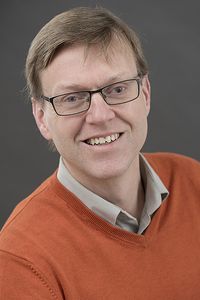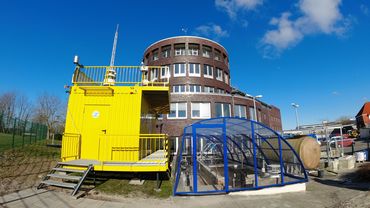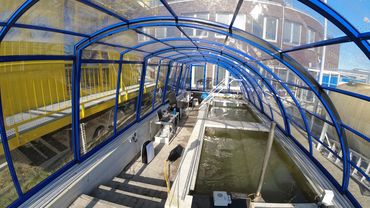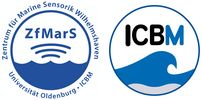Head

Prof. Dr. OLIVER WURL
SURF
Sea Surface Facility (SURF)


Mesocosm studies provide a controlled yet realistic environment for natural science, allowing scientists to observe natural systems on a manageable scale. This controlled setting enables in-depth investigations into complex interactions, responses to environmental changes, and the impact of specific factors. We've developed and built the Sea Surface Facility (SURF, Figure 1) as a pioneering large-scale mesocosm tailored for studying the sea-surface microlayer. This facility allows for research on sea surfaces under more stable conditions and for extended durations (over 30 days). With studies conducted in SURF, we build up a mechanistic understanding of small-scale processes at the sea surface and use this to interpret observations on the open sea.
SURF is located at ICBM in Wilhelmshaven. The pool, measuring 8.5 meters in length, 2 meters in width, and 1 meter in depth, can be filled with seawater sourced from Jade Bay through a pump station, completing the task in just a few hours. Equipped with advanced features (as shown in the video below), SURF accommodates diverse research needs. The unique feature of SURF is the retractable roof, which can be opened or closed as required. The water temperature can be held constant with two cooling units, e.g., with the roof closed or eliminating diurnal warming. Integrated filtration systems, including UV filters, skimmers, and flow filters, create water with a low plankton and particle background, thus replicating open-sea conditions in temperate climates. We have successfully induced natural blooms by adding nutrients and a low simulated water flow. A larger flow pump can be used to simulate more typical hydrodynamics. A rail system on the pool edge allows using various probes at any point and depth for measurements. The simulation capabilities extend to rain with variable drop properties and wind speeds up to 9 m/s.
The DFG research group BASS conducted a comprehensive 5-week multidisciplinary experiment at SURF to gain mechanistic insights into biogeochemical processes and air-sea exchange within the sea-surface microlayer. Figure 2 illustrates a typical bloom development and the enrichment of surfactants in this microlayer. This successful demonstration validates SURF's capability to simulate natural processes relevant to sea-surface dynamics and air-sea interactions, showcasing its significance in advancing our understanding of complex processes in the upper ocean.

